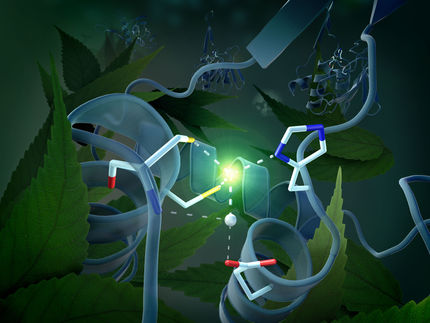Opportunity Knocks for Big Pharma in Credit Crunch
The primary consequence of the credit crunch for non-financial companies is the loss of access to cheap debt
The key impact of the credit crunch on the corporate world is the abrupt loss of cheap debt. During the late 1990s and 2000s companies across all industries have exploited easy access to cheap debt to amplify or ‘leverage’ their return to investors. However, triggered by the sub-prime crisis and the subsequent collapse of big name financial institutions, banks have no choice but to protect their own capital and stop lending – turning off this supply of cheap debt.
This leaves those companies that have taken on debt in the extremely uncomfortable position of having to either rapidly pay off their debts (‘deleveraging’) or re-secure new debt at much higher interest rates – potentially threatening the viability of the firm. Datamonitor believes that large pharmaceutical companies have wisely stayed out of the cheap debt game and as a result, the credit crunch will actually play out as a net positive for an industry much in need of good news, according to Datamonitor head of company analysis Dr. Chris Phelps. “Pharma companies are not only expected to weather the financial storm successfully but to also use this period to exploit their unique cash strength by embarking on an acquisition spree.”
Negative issues already priced into pharma valuations
Until very recently, the pharma industry’s stock market performance has been faltering compared to other sectors. The reasons for its poor performance relative to other industry groups are well known and deep-seated. At its most fundamental level, the pharma industry as a whole has failed to discover and develop sufficient numbers of high-value and innovative products to replace the drugs facing patent expiry and maintain its historical growth rates.
Pharma companies are experiencing pressure from a wide variety of sources, with many facing unprecedented losses of drug sales to generic competition over the coming years. Datamonitor forecasts that between 2007 and 2012, the top 50 pharma companies will face patent expiries on $115 billion worth of drugs*.
Furthermore, in 2007 the FDA approved just 19 new products; the lowest level for over 20 years*. At the same time, the cost of developing innovative therapies keeps rising, reaching an average of $800 million to bring a drug to market; 15 times higher than that recorded in the 1970s and more than three times higher than in the 1980s**. “This lack of true innovation, coupled with recently increased regulatory scrutiny and tougher cost-containment measures from payors to drive down prices, has made the healthcare environment more difficult to operate in than it has ever been before,” Dr. Phelps says.
This array of negative long-term pressures has already been fully reflected in pharma’s stock market performance. Between January 2007 and May 2008, the Dow Jones US Pharmaceutical Index fell by 10%, while the Dow Jones Industrial Average remained broadly unchanged.
In contrast to most industries, pharma is cash rich and has not taken on significant debt
Today’s credit crisis has separated companies into two camps: those that appear to have enough cash to cover their debts, and those that do not.
It is worth noting that average net debt as a proportion of capital employed for the top 20 pharmaceutical companies is just six percent, while the average net debt carried by financial institutions is 95%***. This fact alone suggests that the fallout from the credit crisis will not be as significant in the pharmaceutical industry as in other more highly leveraged sectors.
When this is combined with the fact that the average top 20 pharma company has access to $7.5 bn in cash, equivalents and short-term investments, the ability of large pharma companies to weather the credit storm is very clear.
The markets have clearly recognized the balance sheet strength of pharma in the midst of the credit crunch and as a result, there has been a recent reversal in stock market fortunes: from the end of June 2008 until the end of September 2008, the Dow Jones US Pharmaceutical Index has risen by two percent while the Dow Jones Industrial Average (DJIA) has fallen five percent over the same period (1). The major market declines of early October have seen a continuation of this theme with pharma stocks outperforming the general indices.
Pharma and biotech companies: credit crunch shifts the balance of power in the pharma-biotech relationship
While the credit crunch promises to strengthen the hand of large pharma, the outlook is far from positive for small biotech players. Over the last decade, the pharma industry has increasingly looked to its cousins in the biotechnology sector to help replenish its dwindling product pipelines. There was a symbiotic relationship established whereby biotechnology companies provided innovative therapies and in return, pharmaceutical companies brought funding and development ‘know-how’. A natural balance was established in the pharma-biotech relationship: risk and reward were shared.
However, in recent years biotech’s access to funding from other sources of capital has become easier. Financing became cheaper and the balance of power in the pharma-biotech relationship shifted: pharma’s need for access to biotech products increased significantly, while biotech’s need for pharma funding diminished.
Consequently, biotechnology companies could afford to either carry more risk themselves by taking their projects deeper into clinical development or by demanding more favorable terms from the increasingly desperate pharma industry, Dr. Phelps says. “This shift in power towards biotech companies is reflected in the declining number of licensing deals between pharma and biotech companies.
“Datamonitor’s analysis shows that there has been an average yearly decrease of almost 18% since the beginning of 2006****,” he says.
Big Pharma bargaining power and acquisitive tendencies will blossom in the credit crunch
The current credit crisis looks set to change again the balance of power in the pharma-biotech relationship. Biotechnology companies’ ready access to capital and funding has dried up almost overnight, and while there are few that will struggle immediately, the funding of their operations in the longer term looks more difficult. In terms of licensing deals biotech companies will be forced to accept less favorable terms.
Most significantly, with the cheap debt supply turned off, pharma’s cash pile means that it is now the only serious ‘buyer in the room’ – private equity has vanished and small players will lose their own sources of funding. There really can be only one outcome, Dr. Phelps says. “Under the cover of the credit crunch, Big Pharma will swoop repeatedly to acquire substantial biotech targets.
“Perhaps the clearest example of this intent is that Pfizer currently holds well over $25 billion in cash and short-term investments. It may well be that the credit crunch provides Big Pharma with exactly the opportunity it needs to rebuild its ailing pipelines,” he says.
* Datamonitor report, The Pharmaceutical Industry 2008, March 2008.
** Datamonitor report, Launch Strategies, August 2007.
*** Datamonitor, PharmaVitae Company Comparator Tool October 2008; company-reported data.
**** Datamonitor, Financial Deals Database, October 2008.



























































